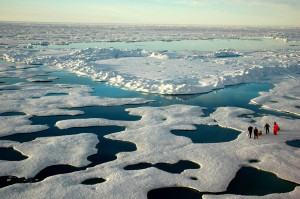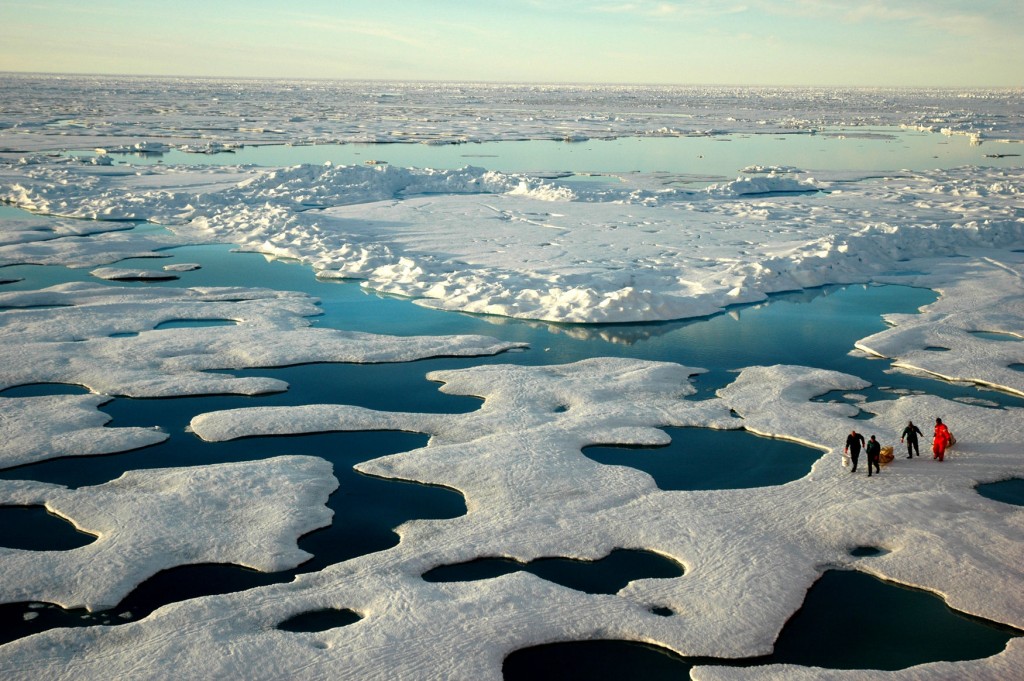
GREENBELT, Md., April 3 (UPI) — The 2013 wintertime sea ice maximum in the Arctic Ocean, following a record summer melt, was the fifth lowest on record, NASA scientists say.
The summer melt saw the sea ice cover shrink to its lowest extent ever recorded, diminishing to about half the size of the average summertime extent from 1979 to 2000, the space agency reported Wednesday.
The winter re-freeze, reaching its maximum extent Feb. 28, was the fifth lowest sea ice coverage in the past 35 years, researchers said.
The figure is in line with an ongoing trend, scientists said; nine of the 10 smallest recorded maximums have occurred during the last decade.
The 2013 winter extent is 144,402 square miles, below the average annual maximum extent for the last three decades, they said.
“The Arctic region is in darkness during winter and the predominant type of radiation is long-wave or infrared, which is associated with greenhouse warming,” Joey Comiso, senior scientist at NASA’s Goddard Space Flight Center in Greenbelt, Md., said. “A decline in the sea ice cover in winter is thus a manifestation of the effect of the increasing greenhouse gases on sea ice.”
Satellite data on sea ice maximum, gathered since 1978, shows an overall downward trend of 2.1 percent per decade in the size of the maximum winter extent, a decline that accelerated after 2004, researchers said.
Copyright 2013 United Press International, Inc. (UPI).







